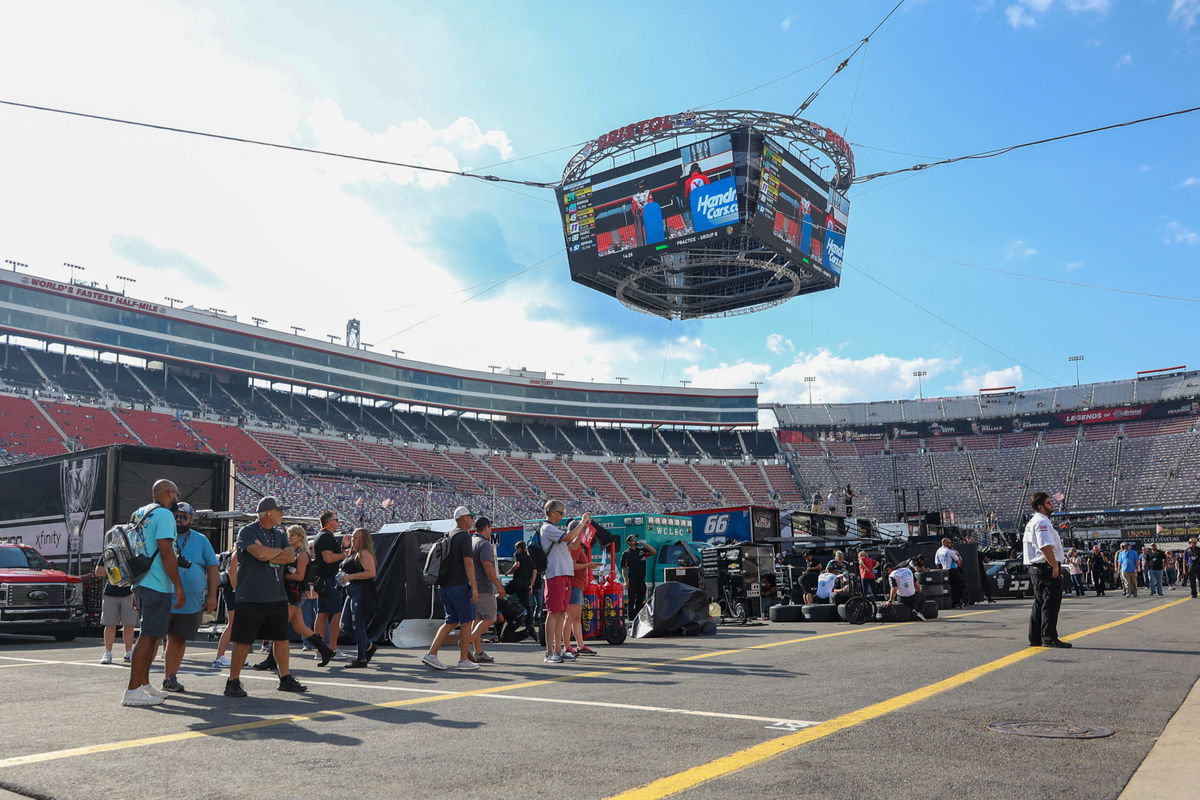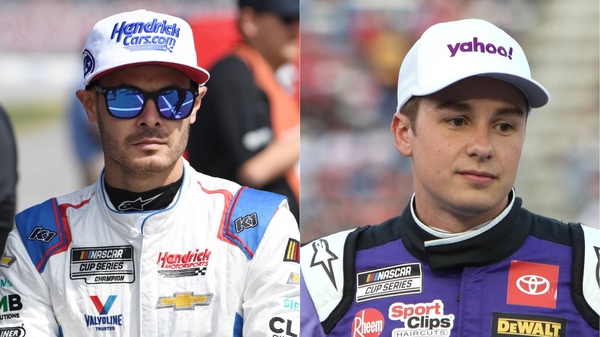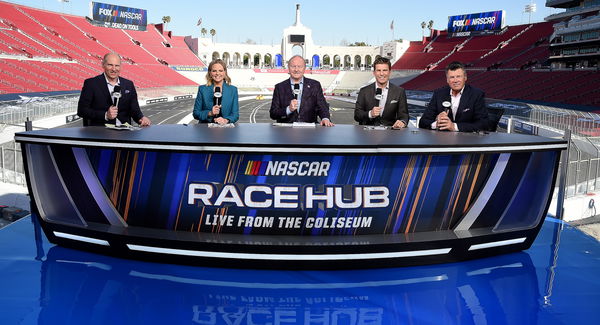
USA Today via Reuters
Sep 15, 2023; Bristol, Tennessee, USA; NASCAR fans watch from the pits during practice for the Bass Pro Shops Night Race at Bristol Motor Speedway. Mandatory Credit: Randy Sartin-USA TODAY Sports

USA Today via Reuters
Sep 15, 2023; Bristol, Tennessee, USA; NASCAR fans watch from the pits during practice for the Bass Pro Shops Night Race at Bristol Motor Speedway. Mandatory Credit: Randy Sartin-USA TODAY Sports
At Kansas Speedway recently, Chase Elliott’s triumph left plenty of fans scratching their heads. Denny Hamlin had led 159 laps at the 2025 Hollywood Casino 400, swept the opening two stages, and looked likely to secure his sixth win of the season. Instead, it was the Hendrick Motorsports driver who entered Victory Lane, despite not having the fastest car on the grid and having led just 24 laps. But a timely pit call, four fresh tires, and an insatiable desire to win helped him in the closing laps. For long-term fans who grew up watching raw speed and endurance prevail, the result felt strange. After all, how could the best team not win?
Watch What’s Trending Now!
It’s a dilemma fans are wrestling with today. Fine margins are deciding races, factors that are not immediately identifiable at first glance. And that’s creating a ‘disconnect’ of sorts, between what the average viewer is seeing and what’s actually deciding the outcomes.
ADVERTISEMENT
From horsepower to handling: NASCAR’s technical pivot
The introduction of the Next-Gen car in 2022 has completely changed how races play out. The vehicle was specifically designed for parity, and it shows on the racetrack. Thanks to a tight aero package, an independent rear suspension, and standardized parts from single-source suppliers, there are fewer differences in performance between teams than ever before. This means that separating the winners from the rest is less about ‘horsepower’ and more about strategy and execution.
For drivers, this means that track position is crucial because passing is more challenging than ever, especially on short tracks. Even the pit crew members are more important than ever before, as a fast stop often decides who’ll come out of the pit lane first. Restarts have become more chaotic than ever before and are often decisive moments during races. It’s rare to have long green flag runs, which means the race’s outcome depends on late cautions, restarts, or a strategy gamble.
ADVERTISEMENT
The result: Confusion, frustration, disconnection
For long-term fans, the ‘new’ version of NASCAR feels significantly less rewarding. The dominant sentiment on social media expresses how dissatisfied fans are, with many of them saying things like, “it’s just luck now” or “nobody can pass anymore.” Even the playoff system is leaving much to be desired, with drivers who are consistently winning races not being in contention for the Bill France Cup in the Championship 4.
Last year, in particular, this sentiment was prevalent among the fans. Kyle Larson and Christopher Bell, the two most consistent drivers, didn’t race for the championship in Phoenix. All because their teams hit a rough patch at the worst possible time. And this playoff system isn’t big on second chances. It has become an execution battle over racing at this point.
ADVERTISEMENT

Imago
Hendrick Motorsports driver Kyle Larson and Joe Gibbs Racing driver Christopher Bell | Credits: Imago
Strong drivers might finish outside the podium finishes, while another racer might pull off a win thanks to race strategy and timing. Back in the good ol’ days, fans used traditional markers like laps led and average speed, but that no longer guarantees wins, which makes it harder to follow the sport for casual fans.
ADVERTISEMENT
The commentary gap: When the broadcast doesn’t help
Another challenge that fans face is how races are being broadcast. Networks tend to focus on what’s happening in front of the field, or on crashes, but they rarely help fans understand the different race strategies teams are employing. A team pitting early or stretching fuel for a long run might change the outcome of the race, but the broadcast doesn’t always explain to viewers why a certain strategy is being followed. Even important aspects like tire management and air pressure often go unnoticed.

Imago
LOS ANGELES – FEBRUARY 2: (L-R) Adam Alexander, Shannon Spake, Larry McReynolds, Jamie McMurray, and Michael Waltrip during the Fox Sports NASCAR Race Hub broadcast on February 2, 2022 in Los Angeles, California. The NASCAR Busch Light Clash race will air live on Fox Sports on Sunday, February 6. (CR: Frank Micelotta/PictureGroup for Fox Sports).
In comparison, Formula 1’s coverage is a lot more comprehensive. The sports’ coverage relies a lot more on data insight, live tire life charts, and pit strategy graphics to keep fans invested in how the race is playing out. As things stand, NASCAR hasn’t reached that standard yet, which leaves casual fans confused about how the eventual ‘winner’ got to the podium.
ADVERTISEMENT
Who actually gets it? Diehards, crews, and engineers
Sure, there are a few people who do understand the races. But we’re talking about crew chiefs, race engineers, and diehard followers of the sport. But for the rest of the ‘casuals’, they have to depend on YouTube creators such as Eric Estepp, technical analysts, driver podcasts, and social media breakdowns, many of whom do a better job than the official TV coverage. Perhaps fans with an engineering or mechanical background can enjoy NASCAR more because they can see through the layers and identify race strategy. But they don’t represent the majority.
Solutions NASCAR could explore
There are some sure-shot ways NASCAR could use to close the existing gap. For one, they can add real-time analytics such as pit data, tire wear estimates, and predictive strategy models to make the experience more immersive for fans. Earlier this year, Amazon Prime Video aired five Cup Series races and included some game-changing features in its streaming. They included ‘key moments’, allowing viewers to rewind major highlights on demand. There was also ‘Rapid Recap’, which delivered a condensed summary for fans who were joining in the middle of the race.
In addition, the streaming service used Amazon Web Services (AWS) to layer in real-time stats and predictive insights, allowing fans to access data such as tire wear and pit strategy, just like Formula 1. There was also a commercial tie-in, allowing fans to “Shop the Race” and buy team gear in real time. The solutions already exist, but NASCAR needs to go beyond a single streaming service and encourage all its networks to ‘innovate’ and provide such data throughout the season.
Why this matters: Engagement, fandom, and future growth
When fans don’t understand why a specific driver ‘won’, their emotional connection with the racer’s outcome, and the sport itself, becomes weaker. For drivers, it hurts their reputation as well, because the underlying reasons behind their wins are not given the appropriate context. For younger fans and newcomers, NASCAR begins to look like a sport where the integrity is being questioned because the lack of explanation makes the result feel unfair. If the sport wants to grow, it needs to give viewers the right experience, one that matches what NASCAR has evolved into.
Conclusion: The race to catch up
The Next-Gen car has pushed NASCAR into a new era, one where execution, race strategy, tire management, and split-second calls matter more than just speed. This adds a layer of complexity to the sport, making it harder to follow without the proper explanation. It’s not about who’s the fastest anymore, but about doing the little things right, and considering how the sport has evolved, the broadcasting needs to change as well to take fans along for the ride.
ADVERTISEMENT
ADVERTISEMENT
ADVERTISEMENT

